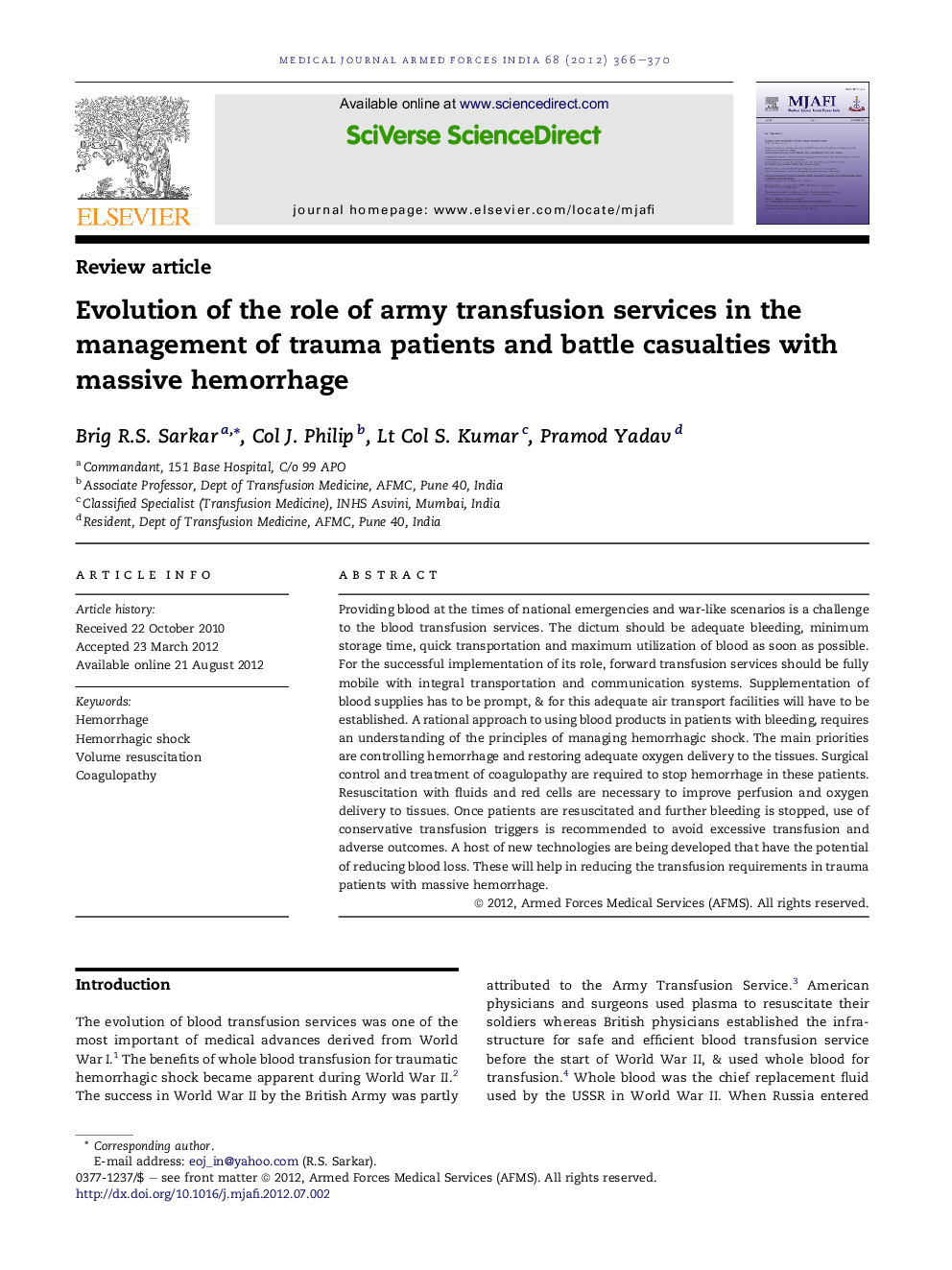| Article ID | Journal | Published Year | Pages | File Type |
|---|---|---|---|---|
| 3161406 | Medical Journal Armed Forces India | 2012 | 5 Pages |
Providing blood at the times of national emergencies and war-like scenarios is a challenge to the blood transfusion services. The dictum should be adequate bleeding, minimum storage time, quick transportation and maximum utilization of blood as soon as possible. For the successful implementation of its role, forward transfusion services should be fully mobile with integral transportation and communication systems. Supplementation of blood supplies has to be prompt, & for this adequate air transport facilities will have to be established. A rational approach to using blood products in patients with bleeding, requires an understanding of the principles of managing hemorrhagic shock. The main priorities are controlling hemorrhage and restoring adequate oxygen delivery to the tissues. Surgical control and treatment of coagulopathy are required to stop hemorrhage in these patients. Resuscitation with fluids and red cells are necessary to improve perfusion and oxygen delivery to tissues. Once patients are resuscitated and further bleeding is stopped, use of conservative transfusion triggers is recommended to avoid excessive transfusion and adverse outcomes. A host of new technologies are being developed that have the potential of reducing blood loss. These will help in reducing the transfusion requirements in trauma patients with massive hemorrhage.
